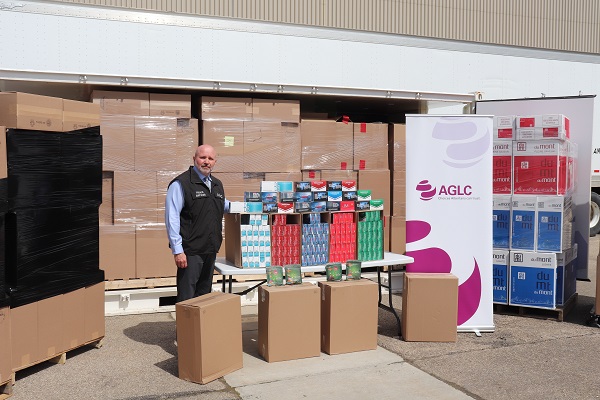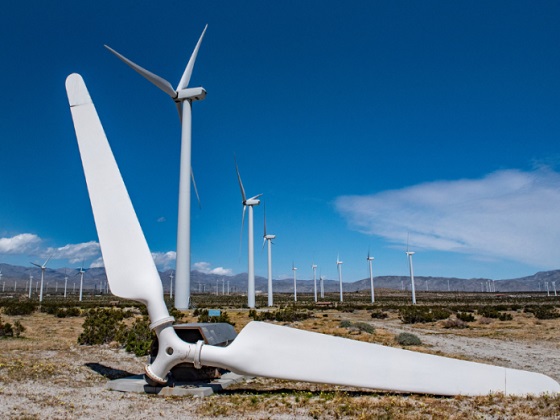Canadian Energy Centre
New deal with global gas giant Shell shows Canada is on the map for LNG: specialist
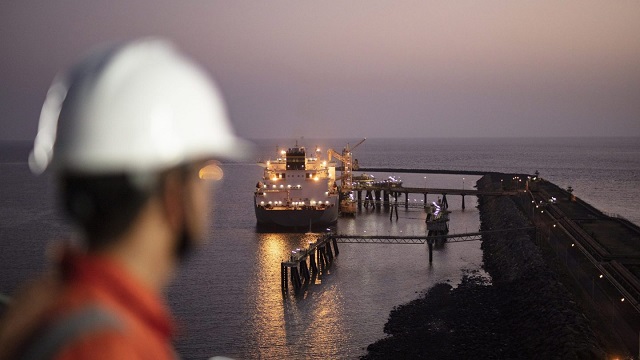
A worker at Shell’s Hazira LNG import terminal, about 250 kilometers from Mumbai, India. Photo courtesy Shell
From the Canadian Energy Centre
By Deborah Jaremko‘This is a signal that the LNG demand is viable beyond 2050’
A new 20-year deal by global energy giant Shell to purchase liquefied natural gas (LNG) from British Columbia is a sign Canada is becoming a player in global LNG markets, says an industry specialist.
Shell has agreed to buy two million tonnes of LNG per year from the proposed Ksi Lisims LNG project located near the Alaska border, which could start operating in 2028.
“Canada is on the map now for LNG. This is a signal that the LNG demand is viable beyond 2050,” says Racim Gribaa, president of Calgary-based Global LNG Consulting.
Gribaa has worked in energy for more than two decades, engaging with governments and industry on LNG developments around the world including Malaysia, the United States, Canada and Qatar.
Long-term LNG deals like the one struck by Ksi Lisims and Shell are hard to come by, he says, and are a sign that so-called LNG “portfolio players” trust the ability of Canada’s natural gas industry to deliver.
A portfolio player like Shell buys LNG from various suppliers and distributes it to buyers around the world – versus a buyer that purchases LNG solely for its own use.
“When portfolio players buy LNG, it’s not necessarily for a specific country. They can sell it anywhere they want,” Gribaa says.
“Canada’s west coast can enable them to sell cargo to efficiently meet demand in Asia without having to ship it all the way from farther locations. Instead of them shipping cargo from the Middle East, Europe, or from the U.S. thereby avoiding longer journeys around the Cape or going through the Strait of Hormuz or Panama Canal, instead they just send it straight from Canada to where they need it to go. It’s economically and logistically beneficial for them.”
Driven by expanding economies in Asia, world LNG trade has increased by more than 200 per cent since 2000, reaching 401 million tonnes in 2022, according to the International Gas Union.
Global natural gas use is rising, driving increased demand for LNG. The U.S. Energy Information Administration’s latest outlook projects natural gas consumption will rise to 197 quadrillion BTU in 2050, up from 153 quadrillion BTU in 2022.
In addition to the deal with Ksi Lisims owners including the Nisga’a Nation, Shell is also lead owner of the LNG Canada project, which is nearing completion at Kitimat, B.C.
The terminal will have capacity of 14 million tonnes per year when it starts up in 2025. The buyers of the exports from LNG Canada are its owners, including Shell and Petronas.
Shell’s decision to purchase LNG from Ksi Lisims could ensure it has plentiful supply available regardless of the timeline of the second phase of LNG Canada, Gribaa says.
“For a portfolio player, having options is valuable. We have enough demand globally to meet both Ksi Lisims LNG and LNG Canada phase 2, especially as coal is gradually faded out from Asia’s power mix,” he says.
“The only viable solution is to replace it with natural gas through LNG, as well as renewables, so the demand is forecast to be strong for several decades to come.”
Growing Canada’s LNG exports to Asia could reduce emissions by 188 million tonnes per year, or the annual equivalent of taking all internal combustion engine vehicles off Canadian roads, according to a 2022 study by Wood Mackenzie.
Down the coast from LNG Canada at Squamish, B.C. another major portfolio player is leaning on Canadian LNG.
BP Gas Marketing is the foundational customer for the Woodfibre LNG project, where early construction is underway.
Over a 15-year period, BP will purchase 1.95 million tonnes of the project’s 2.1 million tonne per year LNG capacity, and the remaining 0.15 million tonnes per year “on a flexible basis.”
“When you have such commercial commitments inked, it provides a future perspective on supply and demand, and perhaps most importantly it asserts the importance of Canada’s role in providing the world with a clean, affordable and secure long term LNG supply,” Gribaa says.
Canadian Energy Centre
Trans Mountain completion shows victory of good faith Indigenous consultation
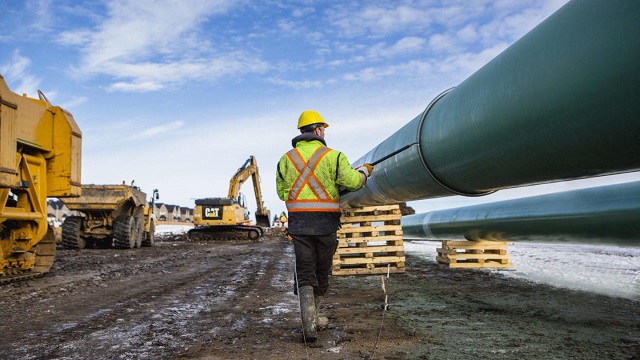
Photo courtesy Trans Mountain Corporation
From the Canadian Energy Centre
‘Now that the Trans Mountain expansion is finally completed, it will provide trans-generational benefits to First Nations involved’
While many are celebrating the completion of the Trans Mountain pipeline expansion project for its benefit of delivering better prices for Canadian energy to international markets, it’s important to reflect on how the project demonstrates successful economic reconciliation with Indigenous communities.
It’s easy to forget how we got here.
The history of Trans Mountain has been fraught with obstacles and delays that could have killed the project, but it survived. This stands in contrast to other pipelines such as Energy East and Keystone XL.
Starting in 2012, proponent Kinder Morgan Canada engaged in consultation with multiple parties – including many First Nation and Métis communities – on potential project impacts.
According to Trans Mountain, there have been 73,000 points of contact with Indigenous communities throughout Alberta and British Columbia as the expansion was developed and constructed. The new federal government owners of the pipeline committed to ongoing consultation during early construction and operations phase.
Beyond formal Indigenous engagement, the project proponent conducted numerous environmental and engineering field studies. These included studies drawing on deep Indigenous input, such as traditional ecological knowledge studies, traditional land use studies, and traditional marine land use studies.
At each stage of consultation, the proponent had to take into consideration this input, and if necessary – which occurred regularly – adjust the pipeline route or change an approach.
With such a large undertaking, Kinder Morgan and later Trans Mountain Corporation as a government entity had to maintain relationships with many Indigenous parties and make sure they got it right.
 Trans Mountain participates in a cultural ceremony with the Shxw’ōwhámél First Nation near Hope, B.C. Photograph courtesy Trans Mountain
Trans Mountain participates in a cultural ceremony with the Shxw’ōwhámél First Nation near Hope, B.C. Photograph courtesy Trans Mountain
It was the opposite of the superficial “checklist” form of consultation that companies had long been criticized for.
While most of the First Nation and Métis communities engaged in good faith with Kinder Morgan, and later the federal government, and wanted to maximize environmental protections and ensure they got the best deal for their communities, environmentalist opponents wanted to kill the project outright from the start.
After the government took over the incomplete expansion in 2018, green activists were transparent about using cost overruns as a tactic to scuttle and defeat the project. They tried to make Trans Mountain ground zero for their anti-energy divestment crusade, targeting investors.
It is an amazing testament to importance of Trans Mountain that it survived this bad faith onslaught.
In true eco-colonialist fashion, the non-Indigenous activist community did not care that the consultation process for Trans Mountain project was achieving economic reconciliation in front of their eyes. They were “fair weather friends” who supported Indigenous communities only when they opposed energy projects.
They missed the broad support for the Trans Mountain expansion. As of March 2023, the project had signed agreements with 81 Indigenous communities along the proposed route worth $657 million, and the project has created over $4.8 billion in contracts with Indigenous businesses.
Most importantly, Trans Mountain saw the maturing of Indigenous capital as Indigenous coalitions came together to seek equity stakes in the pipeline. Project Reconciliation, the Alberta-based Iron Coalition and B.C.’s Western Indigenous Pipeline Group all presented detailed proposals to assume ownership.
Although these equity proposals have not yet resulted in a sale agreement, they involved taking that important first step. Trans Mountain showed what was possible for Indigenous ownership, and now with more growth and perhaps legislative help from provincial and federal governments, an Indigenous consortium will be eventually successful when the government looks to sell the project.
If an Indigenous partner ultimately acquires an equity stake in Trans Mountain, observers close to the negotiations are convinced it will be a sizeable stake, well beyond 10 per cent. It will be a transformative venture for many First Nations involved.
Now that the Trans Mountain expansion is finally completed, it will provide trans-generational benefits to First Nations involved, including lasting work for Indigenous companies. It will also demonstrate the victory of good faith Indigenous consultation over bad faith opposition.
Alberta
Game changer: Trans Mountain pipeline expansion complete and starting to flow Canada’s oil to the world

Workers complete the “golden weld” of the Trans Mountain pipeline expansion on April 11, 2024 in the Fraser Valley between Hope and Chilliwack, B.C. The project saw mechanical completion on April 30, 2024. Photo courtesy Trans Mountain Corporation
From the Canadian Energy Centre
By Will Gibson
‘We’re going to be moving into a market where buyers are going to be competing to buy Canadian oil’
It is a game changer for Canada that will have ripple effects around the world.
The Trans Mountain pipeline expansion is now complete. And for the first time, global customers can access large volumes of Canadian oil, with the benefits flowing to Canada’s economy and Indigenous communities.
“We’re going to be moving into a market where buyers are going to be competing to buy Canadian oil,” BMO Capital Markets director Randy Ollenberger said recently, adding this is expected to result in a better price for Canadian oil relative to other global benchmarks.
The long-awaited expansion nearly triples capacity on the Trans Mountain system from Edmonton to the West Coast to approximately 890,000 barrels per day. Customers for the first shipments include refiners in China, California and India, according to media reports.
Shippers include all six members of the Pathways Alliance, a group of companies representing 95 per cent of oil sands production that together plan to reduce emissions from operations by 22 megatonnes by 2030 on the way to net zero by 2050.
The first tanker shipment from Trans Mountain’s expanded Westridge Marine Terminal is expected later in May.
 Photo courtesy Trans Mountain Corporation
Photo courtesy Trans Mountain Corporation
The new capacity on the Trans Mountain system comes as demand for Canadian oil from markets outside the United States is on the rise.
According to the Canada Energy Regulator, exports to destinations beyond the U.S. have averaged a record 267,000 barrels per day so far this year, up from about 130,000 barrels per day in 2020 and 33,000 barrels per day in 2017.
“Oil demand globally continues to go up,” said Phil Skolnick, New York-based oil market analyst with Eight Capital.
“Both India and China are looking to add millions of barrels a day of refining capacity through 2030.”
In India, refining demand will increase mainly for so-called medium and heavy oil like what is produced in Canada, he said.
“That’s where TMX is the opportunity for Canada, because that’s the route to get to India.”
Led by India and China, oil demand in the Asia-Pacific region is projected to increase from 36 million barrels per day in 2022 to 52 million barrels per day in 2050, according to the U.S. Energy Information Administration.
More oil coming from Canada will shake up markets for similar world oil streams including from Russia, Ecuador, and Iraq, according to analysts with Rystad Energy and Argus Media.
Expanded exports are expected to improve pricing for Canadian heavy oil, which “have been depressed for many years” in part due to pipeline shortages, according to TD Economics.
 Photo courtesy Trans Mountain Corporation
Photo courtesy Trans Mountain Corporation
In recent years, the price for oil benchmark Western Canadian Select (WCS) has hovered between $18-$20 lower than West Texas Intermediate (WTI) “to reflect these hurdles,” analyst Marc Ercolao wrote in March.
“That spread should narrow as a result of the Trans Mountain completion,” he wrote.
“Looking forward, WCS prices could conservatively close the spread by $3–4/barrel later this year, which will incentivize production and support industry profitability.”
Canada’s Parliamentary Budget Office has said that an increase of US$5 per barrel for Canadian heavy oil would add $6 billion to Canada’s economy over the course of one year.
The Trans Mountain Expansion will leave a lasting economic legacy, according to an impact assessment conducted by Ernst & Young in March 2023.
In addition to $4.9 billion in contracts with Indigenous businesses during construction, the project leaves behind more than $650 million in benefit agreements and $1.2 billion in skills training with Indigenous communities.
Ernst & Young found that between 2024 and 2043, the expanded Trans Mountain system will pay $3.7 billion in wages, generate $9.2 billion in GDP, and pay $2.8 billion in government taxes.
-

 Frontier Centre for Public Policy2 days ago
Frontier Centre for Public Policy2 days agoThe PM as Leaf’s coach
-

 Economy1 day ago
Economy1 day agoPrime minister’s misleading capital gains video misses the point
-
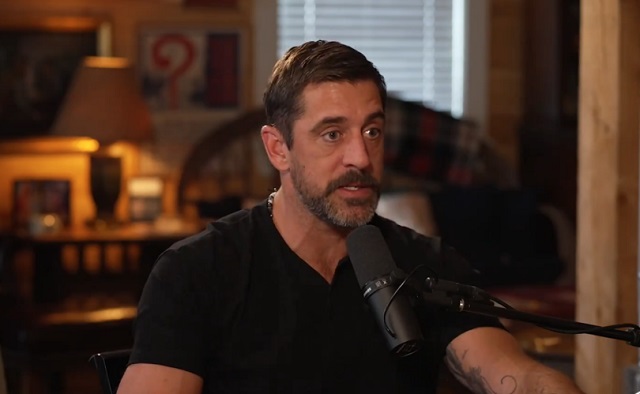
 COVID-191 day ago
COVID-191 day agoTucker Carlson and NFL star Aaron Rodgers discuss Bill Gates, COVID-19, US Deep State
-
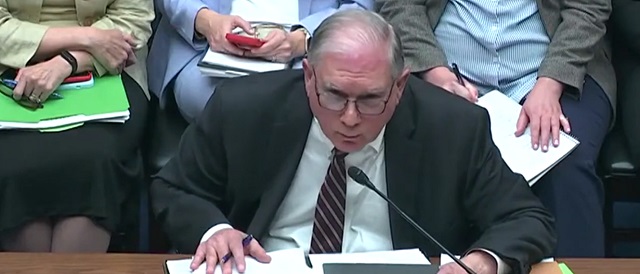
 COVID-191 day ago
COVID-191 day agoTop Fauci Aide Allegedly Learned To Make ‘Smoking Gun’ Emails ‘Disappear,’ Testimony Reveals
-

 COVID-1919 hours ago
COVID-1919 hours agoThe Vials and the Damage Done: Canada’s National Microbiology Laboratory Scandal, Part II
-

 Brownstone Institute10 hours ago
Brownstone Institute10 hours agoMusk Wins Latest Censorship Battle in Australia
-

 Brownstone Institute10 hours ago
Brownstone Institute10 hours agoEnough With These Dangerous Calculations



